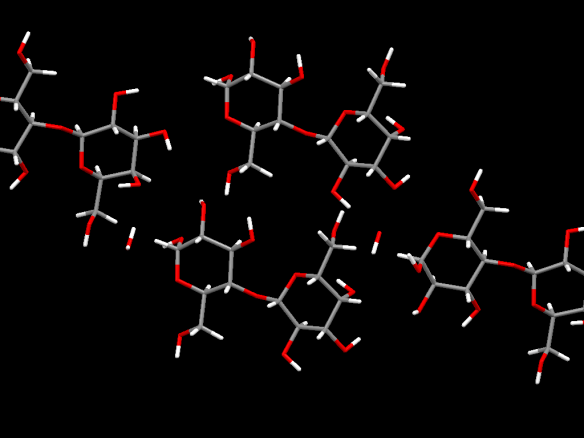Not for the intolerant – Lactose
We've had a few food-related crystal already, for instance Cocoa butter, Potassium Bitartrate and Salt, but in June we have a bit of theme of 'crystals of materials that you find in your food' going on – we hope you enjoy!
Why would you want to know your foodstuffs' crystal structures? Though many of these materials and molecules, that we digest every day, have been known about and eaten for centuries it wasn't until crystallography discovered the arrangement of these atoms that we could understand what shape they were and, most importantly, how they interact with our bodies.
What does it look like?

Image generated by the Mercury crystal structure visualisation software http://www.ccdc.cam.ac.uk/Solutions/CSDSystem/Pages/Mercury.aspx
What is it?
OK, this is a bad one to start the theme of 'crystals that we eat' with as an estimated 75% of the world have a difficulty in digesting this molecule as they move into adulthood. This is lactose, the sugar molecule found in dairy products. It's made up of two sugar rings, one galactose and one glucose. The reason that many can't digest this is because they are deficient in the enzyme lactase which is needed for the body to chop the lactose molecule in two for the body to store.
Where did the structure come from?
This is actually the structure of lactose monohydrate (if you look closely there's a water molecule hiding between the lactose molecules). This image was generated from structure #2300456 in the Crystallography Open Database.






